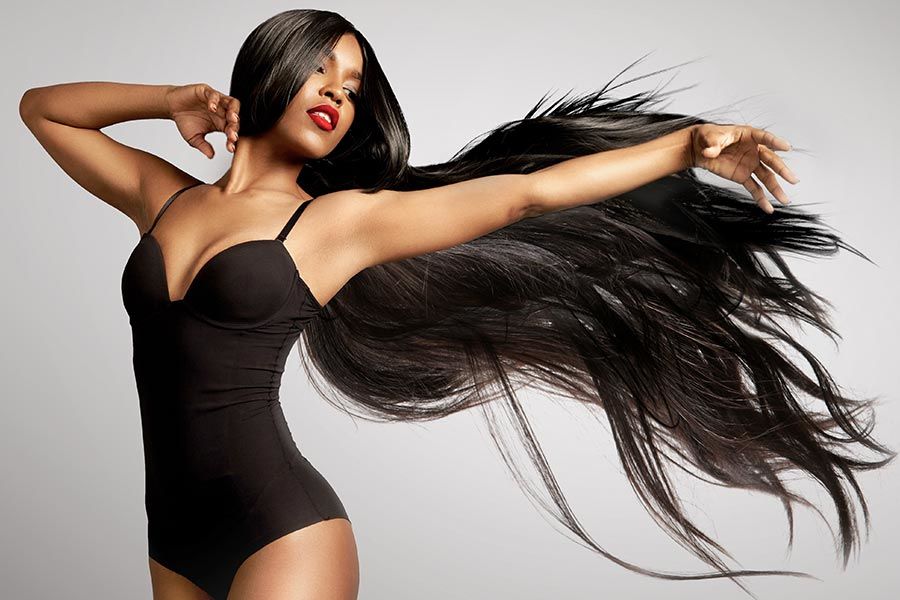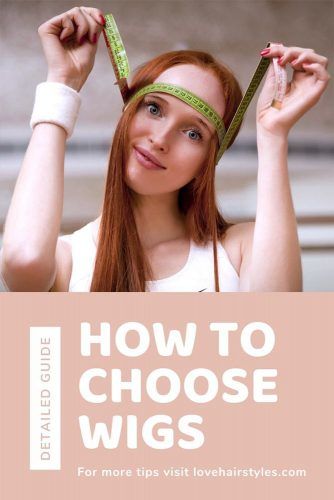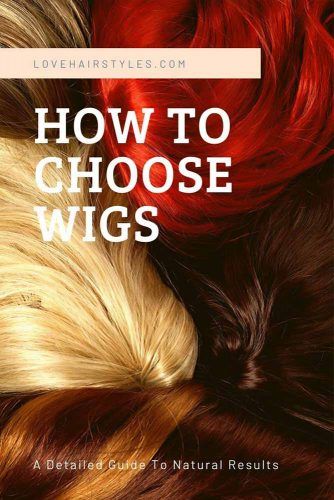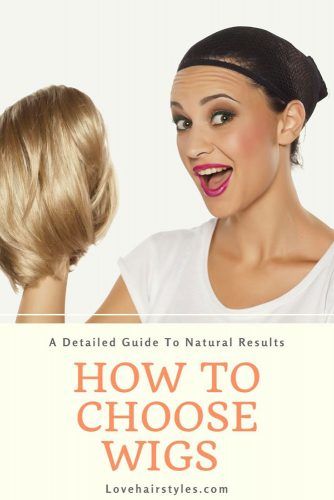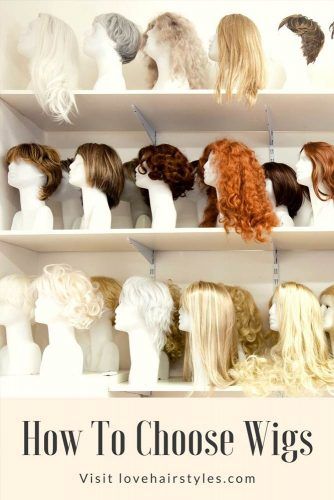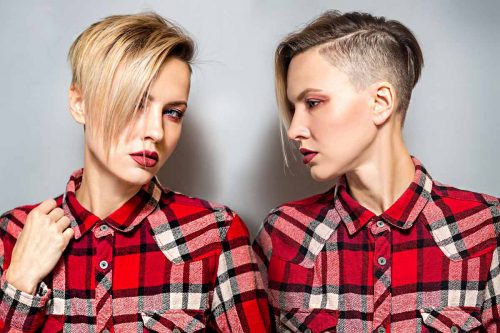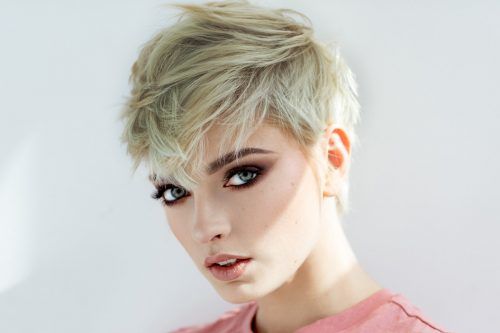Millions of people from all around the world wear wigs every day. Surprised? That only means two things. First off, you’re not alone. Second, those people know how to make their wigs a part of their daily lives seamlessly; they just took the right approach to choose wigs, finally reaching harmony and confidence with their looks.
There are many reasons why you can encounter the need for a wig in your life: alopecia, thinning hair, a will for experiments. But, before you yield to the misconceptions about the naturalness and comfort of being a wig-wearer, let this guide tell you the truth.
Here, we’re sharing the key elements to get the most of a wig based on your head size, face shape, and complexion. Follow us, and nobody will know you’re wearing a wig.
Measure The Head Size
Whether you want to show up at your local Comic-Con with your fav characters’ cosplay wigs or you want to incorporate bob wigs into your routine, they should fit your head perfectly. When you order clothes on the web, you need to take measurements of your body. Well, the same goes for choosing wigs for women: you need to determine the size of your head.
Generally, there are three basic sizes: petite, average, and large. The average size speaks for itself - most women wear it. As for those who don’t fall under the average category, they wear the petite size. In fact, very few women wear large caps.
Before purchasing a wig, you should be precisely accurate with your measurements, so it’s always better to have someone to help. Note that the tape measure should sit snugly, yet not tightly. Also, make sure it’s not pulled.
To measure head circumference, trace a seamstress tape measure around your hairline, starting at the forehead. Ensure that you trace all the way around the nape, behind your ears, and back behind the opposite ear to see the end of the tape at the front.
- Petite: 20.5-21.5”
- Petite/Average: 21-22”
- Average: 21.5-22.5”
- Large: 22.5-23”
For more accurate measurements, you may also want to measure your head front to back. Run your finger up to the center of your forehead until you reach the roots. Repeat the same step with another finger running up to your neck. These two points are where you should place the tape measure.
- Petite: 13.25”
- Petite-Average: 13.75”
- Average: 14.25”
- Large: 15.5”
Choose Hair Type: Human, Synthetic or Heat-Friendly Synthetic Hair
Once you measure the size of your head, it’s time to choose a hair type of your wig. There are three options to choose from: human hair, synthetic hair, and heat-resistant hair. Let’s talk about their pros and cons.
Human Hair
Pros:
- Since human hair wigs are made of real hair, they provide styling versatility just like your own hair.
- It gives a completely natural appearance.
Cons:
- Real hair is more expensive than synthetic options.
- It requires proper maintenance and regular moisturizing, as real hair may become brittle and dry without natural oils.
- Once your hair gets wet under the rain or some humidity conditions, you will need to restyle it.
Bottom line: a human wig is a nice option for those who have time to give much of an effort to maintain it. If you’re looking for something more effortless, consider synthetics.
Synthetic Hair
Pros:
- A high-quality synthetic wig is visually indistinguishable from a human hair one.
- It can retain its shape once you spritz it with water.
- Synthetic hair requires little styling.
Cons:
- This type of hair wig doesn’t allow for heat styling.
- It lasts for 4-6 months with proper care.
Bottom line: Synthetic hair offers natural looks that are easy to style. However, they can’t be exposed to heat and don’t serve as long as human wig does.
Heat-Friendly Synthetic Hair
Pros:
- This synthetic material allows you to experiment with anything from straight to curly.
- It gives a natural appearance.
Cons:
- Its care requires even more attention than human hair.
- Sometimes when the wig is pressed against a pillow or chair for a long time, it can become matted, which you can fix with a flat iron.
- If worn daily, a heat-friendly synthetic wig will last for 3 months.
Bottom line: If you don’t want to wear a human hair wig while having styling freedom, a heat-resistant wig is what you need. But, keep in mind its care requirements and lifespan.
Choose Cap Type: Classic, Monofilament, Hand-Tied, Lace Front Wigs
A wig cap is what gives your wig support and keeps it in all day long. It splits into four types: classic, monofilament, hand-tied, and lace front caps. And your task is to choose the one that works best for you.
Classic
This type is made with traditional wefted rows of hair that are sewn by machine. Some of them may come without a cap to let the hair and scalp breathe, securing the wig with teased fibers at the roots. The classic construction is not flexible in terms of styling, yet, they provide a time-tested natural appearance that all women can afford.
Monofilament
Unlike a classic wig, monofilament options offer an even more natural appearance. Consequently, this wig type is way more expensive. Instead of wefted rows, this type involves individually placed hair strands in a mesh cap, which makes the hair look as natural as if it grows from the scalp. The part is not stationary, so you can go for various styling choices, as well as experiment with additional weave hair options.
Hand-Tied
Even better than monofilament, hand-tied options take an extra step to give unbelievably natural results. In contrast to regular monofilament structure, hand-tied wigs are sewn of a lightweight piece of lace fabric, featuring a hand-tied construction throughout the entire cap.
Lace Front
To allow women to pull their hair back from their faces while still having natural looks, anything from a classic to a hand-tied wig can feature lace fronts. Basically, front lace wigs involve individually tied hairs placed on fine lace around the hairline, which work for the natural appearance of pulled back hair.
Choose Style & Color
Style
Now, it’s all about having fun and experimenting to your heart’s content. Nonetheless, you should keep in mind that first goes a hairstyle and then goes a shade, as every wig comes in a selection of hues from the full color range. Though some women are afraid that they won’t find the perfect shade for their complexion and natural base, modern wigs come in a vast variety of unique hair colors.
As for possible options of hairdo wigs offer today, the diversity knows no limits. If you rocked a fantastic bob before hair loss, you can find a lot of beautiful bob wigs. The best thing is, there are no texture restrictions, so today’s market is also full of amazing natural hair wigs for African American women who damaged their locks. On top of that, there are lots of wigs with bangs if you love to have that beautifying frame.
A tip: If you flaunted with a long mane before your hair loss, it’s better to go for short hair wigs. Apart from providing you with styling manageability, such options will give a nice transition to your hair when it starts to grow back.
Color
Don’t ever let the color of your wig up to a random. It’s very important to choose a shade that looks natural against your skin tone, as well as matches your base. Making a choice may be tough, so we recommend you to go to a physical store and compare your locks with their swatches.
On the other hand, you may not find the right wig in your area. In this case, you can send your lock as a sample to some good online wig shop and ask their professionals for assistance. Don’t worry, there’s nothing weird about it; it’s a common practice.
What Else You Need To Know About Hair Wigs
We bet you still have lots of questions popping in your mind. Let’s get things straight about wigs, dispel ridiculous myths about them once and for all, and summarize today’s info.
Shopping Tips
Q: Should I buy more than one wig?
A: It depends on the type of wig you choose, as well as how you take care of it. Human hair wigs may last from one to three years, whereas synthetic hair can serve you from three to six months. As a matter of fact, you can get a couple of synthetic wigs to diversify your look. But generally, one wig that allows for various styling is enough.
Q: What are your wig shopping tips?
A: Start with proper measurements, learn what type is the best option for you, and always start with choosing a style of your wig.
Q: How much is a really good wig?
A: The cost depends on the type and features of your wig. For instance, prices for a basic wig may range from $30-100, synthetic options may cost $99 - $399, and hairpieces with real hair are up to $2,000.
Q: What are the best wigs to buy?
A: Here are some of today’s pics suggested by professional stylists: FUHSI, eNilecor, Headcovers, K'ryssma, and JYL.
Questions About Wig Types
Q: What are medical wigs?
A: They are gentle and lightweight wigs designed for cancer patients to make them feel comfortable and confident on their way to recovery.
Q: Which wigs are best for sensitive scalps?
A: Hand-tied options with monofilament construction are the best picks for sensitive scalps.
Q: Do I need a full wig if I have thinning hair or partial hair loss?
A: It’s actually all about how you feel with this state of the hair. While some may feel OK when something happens to their manes, others may get upset and lose their confidence. In the second scenario, a wig would be a lifeline.
Q: What kind of wig looks most natural?
A: For the most natural results, invest in a lace cap front combined with a monofilament cap. As we told you already, this option gives an appearance of hair growing from the scalp.
Q: Is wearing a wig uncomfortable?
A: Who told you that? Well, that’s a myth, because if you take the right measurements and find a cap that works best for your head, you will become a single whole with your wig.
Questions About Wig Care
Q: How do I care for my wig?
A: If you have a wig made of human hair, do what you would usually do with your own hair: wash, condition, and moisturize it regularly. As for synthetic hair, use products formulated specifically for wig-care, and don’t forget to brush and detangle it.
Q: Can my wig be dyed or colored?
A: Yes, you can dye your wig. But, if you work with synthetic hair, don’t go with harsh permanent dye, as you can lose the luster of the hair, making it dull and brittle. With human hair, you can use the same dyes and developers as you would use for your hair.
Q: Can I sleep in my wig?
A: Sleeping with your wig on is not recommended, as it shortens its lifespan. When you sleep in a wig, the hair brushes against the pillow and causes friction, which may lead to breakage, matting, and tangling.
FAQ: Wigs
What kind of wig looks most natural?
Choose a wig made of human hair for the most natural appearance. Human hair and synthetic wigs are the two types of wigs available. Human hair, as you might expect, gives the most natural look. It falls and swings the way natural hair does because it’s real.
Do wigs with bangs look more natural?
Your natural hair is not trimmed into bangs when you wear a wig with bangs. Your natural hair will grow back, but a human hair wig will save you time, so, you won’t have to adjust it to your own hairstyle. You can style your natural hair however you like while wearing the wig.
Are wigs noticeable?
Many people who still have great hair buy wigs to liven up their style or to change their appearance. It’s critical to wrap your own hair as near to the scalp as possible, otherwise, the wig will be visible.
Was this article helpful?



